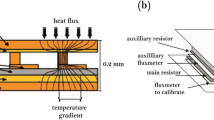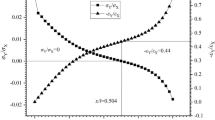Abstract
The paper presents experimental investigations of friction properties (a) between adjacent sheathing panels made of Oriented Strand Board (OSB) and (b) between OSB panels and glued laminated timber (GLT) frame members as they occur, for example, between parts of light-frame timber shear walls. The friction stresses are evaluated for different levels of compressive stress and different loading rates in monotonic and cyclic tests. The test results confirm that the static friction coefficients are larger and have a larger variability than the kinetic friction coefficients. The friction coefficients between the GLT frame members and the OSB panels are in general smaller than the friction coefficients between the sheathing panels themselves. The tests show that the friction coefficients decrease with increasing cumulative sliding displacement. Analysis of the contact surface before and after the shear test indicates that the sliding reduces the height of the asperities of the contact surfaces. However, after a cumulative displacement of about 100 mm the friction coefficients remain approximately constant.








Similar content being viewed by others
References
Kolb J (2008) Systems in timber engineering: loadbearing structures and component layers. LIGNUM Holzwirtschaft Schweiz and Deutsche Gesellschaft für Holzforschung (eds) Birkhäuser, Basel, Switzerland, p 319
Association A-TEW (2013) Builder tips: prevent buckling with proper spacing. A.-T.E.W. Association (ed) Tacoma, Washington, USA
Cobeen KE et al (2014) Seismic design of wood light-frame structural diaphragm systems: a guide for practicing engineers. NEHRP seismic design technical brief no. 10. Applied Technology Council for the National Institute of Standards and Technology NIST, U.S. Department of Commerce, Gaithersburg, MD, USA
Lewis MC, Gupta R, Miller TH (2009) Performance of wood-frame wall with thin ECC shear panel. ASCE Pract Period Struct Des Construct 14(3):123–129
Naeim F, Bhatia H, Lobo RM (2001) Performance based seismic engineering. In: Naeim F (ed) The seismic design handbook. Kluwer Academic, Boston, pp 757–792
Popov VL (2010) Contact mechanics and friction: physical principles and applications. Springer, Berlin
Niemz P (1993) Physik des Holzes und der Holzwerkstoffe. DRW-Verlag, Leinfelden-Echterdingen, Germany
Chang W-S et al (2007) On mechanical behavior of traditional timber shear wall in Taiwan I: background and theory derivation. J Wood Sci 53(1):17–23
Xu MJ et al (2014) Effects of surface roughness and wood grain on the friction coefficient of wooden materials for wood–wood frictional pair. Tribol Trans 57(5):871–878
Aira JR et al (2014) Static and kinetic friction coefficients of Scots pine (Pinus sylvestris L.), parallel and perpendicular to grain direction. Mater Construcc 64(315):030
Bergman R et al (2010) Wood handbook: wood as an engineering material. Ross RJ (ed) Forest Products Laboratory, Madison
CEN (2004) EN 1995–2: Eurocode 5: design of timber structures—Part 2: bridges. European Committee for Standardization, Brussels
McKenzie WM, Karpovich H (1968) The frictional behaviour of wood. Wood Sci Technol 2(2):139–152
Murase Y (1984) Friction of wood sliding on various materials. J Fac Agric Kyushu Univ (Japan) 28(4):147–160
Bejo L, Lang EM, Fodor T (2000) Friction coefficients of wood-based structural composites. For Prod J 50(3):39
Hirai T et al (2008) Some aspects of frictional resistance in timber construction. In: Proceedings of the World Conference on Timber Engineering 2008 (WCTE 2008), Miyazaki, Japan
Meng Q, Hirai T, Koizumi A (2008) Frictional coefficients between timber and other structural materials. Mokuzai Gakkaishi 54(5):281–288
Murase Y (1980) Frictional properties of wood at high sliding speed. J Fac Agric Kyushu Univ (Japan) 26(2):61–65
Meng Q et al (2010) Effect of frictional force on lateral resistance of wall-floor joints of wooden light frame constructions. Mokuzai Gakkaishi 56(1):48–54
Chang WS, Hsu MF, Komatsu K (2011) A new proposal to reinforce planked timber shear walls. J Wood Sci 57(6):493–500
Sjödin J, Serrano E, Enquist B (2008) An experimental and numerical study of the effect of friction in single dowel joints. Holz Roh Werkst 66(5):363–372
Plesnik T (2014) Effect of an intermediate material layer on the lateral load-slip characteristics of nailed joints. Carleton University Ottawa, Carleton
Steiger R et al (2015) Experimental modal analysis of a multi-storey light-frame timber building. Bull Earthq Eng 15(8):3265–3291
CEN (2013) EN 14080: timber structures—glued laminated timber and glued solid timber—requirements. European Committee for Standardization, Brussels
CEN (2006) EN 300: Oriented Strand Boards (OSB)—definitions, classification and specifications. European Committee for Standardization, Brussels
CEN (2004) EN 1995-1-1: Eurocode 5: design of timber structures—part 1–1: general—common rules and rules for buildings. European Committee for Standardization, Brussels
Deutsches Institut für Bautechnik DIBt (2011) Allgemeine bauaufsichtliche Zulassung Z-9.1-644: STERLING CONTI OSB Z, Berlin, Germany
Deutsches Institut für Bautechnik DIBt (2012) Allgemeine bauaufsichtliche Zulassung Z-9.1-566: EUROSTRAND OSB 4 TOP, Berlin, Germany
Lourenço PB, Barros JO, Oliveira JT (2004) Shear testing of stack bonded masonry. Constr Build Mater 18(2):125–132
CEN (2007) EN 1052-3: methods of test for masonry—Part 3: determination of initial shear strength. European Committee for Standardization, Brussels
Petry S, Beyer K (2014) Scaling unreinforced masonry for reduced-scale seismic testing. Bull Earthq Eng 12(6):2557–2581
Felkel A et al (2010) DIN 1052 Praxishandbuch Holzbau. Fördergesellschaft Holzbau und Ausbau mbH and D.D.I.f.N.e.V. (ed), Beuth, Berlin, Germany
ISO (2010) ISO, FDIS 21581: timber structures—static and cyclic lateral load test methods for shear walls. International Organisation for Standardization, Geneva
Mergos PE, Beyer K (2014) Loading protocols for European regions of low to moderate seismicity. Bull Earthq Eng 12(6):2507–2530
Buytaert JAN, Dirckx JJJ (2012) Fringe projection profilometry. In: Rastogi PK, Hack E (eds) Optical methods for solid mechanics. Wiley-VCH Verlag & Co., Weinheim, pp 303–344
Rastogi PK, Hack E (2012) Optical methods for solid mechanics: a full-field approach. Wiley-VCH, Weinheim
Stribeck R (1902) Die wesentlichen Eigenschaften der Gleit- und Rollenlager (The basic properties of plain and roller bearing). Z Ver Dtsch Ing 46(36):1342–1348
Stribeck R (1902) Die wesentlichen Eigenschaften der Gleit- und Rollenlager (The basic properties of plain and roller bearing). Z Ver Dtsch Ing 46(38):1432–1438
Armstrong-Hélouvry B, Dupont P, De Wit CC (1994) A survey of models, analysis tools and compensation methods for the control of machines with friction. Automatica 30(7):1083–1138
Benjamin JR, Cornell CA (1970) Probability, statistics, and decision for civil engineers, Vol 14. McGraw-Hill, New York
Acknowledgements
This study was supported by the Swiss National Science Foundation SNSF (National Research Program 66 Resource Wood, Project 406640-136900). The assistance of the Empa technicians Daniel Heer in preparing the specimens as well as Max Heusser and Slavko Tudor in carrying out the experiments is gratefully acknowledged.
Funding
This study was funded by the Swiss National Science Foundation SNSF (Grant No. 406640-136900).
Author information
Authors and Affiliations
Corresponding author
Ethics declarations
Conflict of interest
The authors declare that they have no conflict of interest.
Rights and permissions
About this article
Cite this article
Steiger, R., Fink, G., Nerbano, S. et al. Experimental investigation of friction stresses between adjacent panels made of Oriented Strand Board (OSB) and between OSB panels and glued laminated timber (GLT) frame members. Mater Struct 51, 2 (2018). https://doi.org/10.1617/s11527-017-1124-5
Received:
Accepted:
Published:
DOI: https://doi.org/10.1617/s11527-017-1124-5




